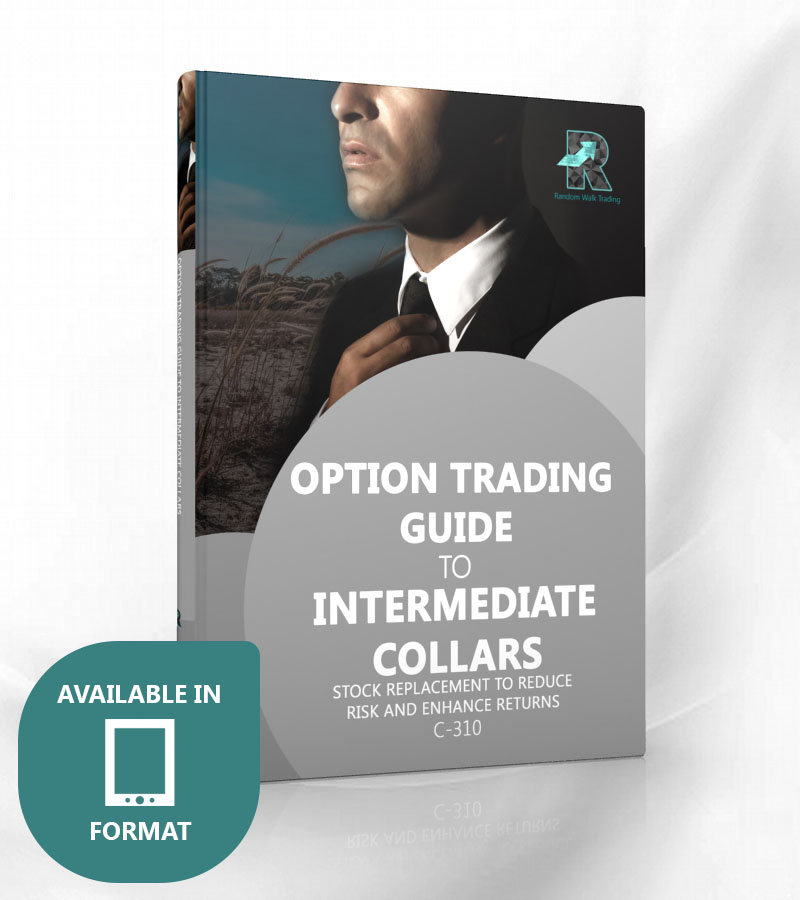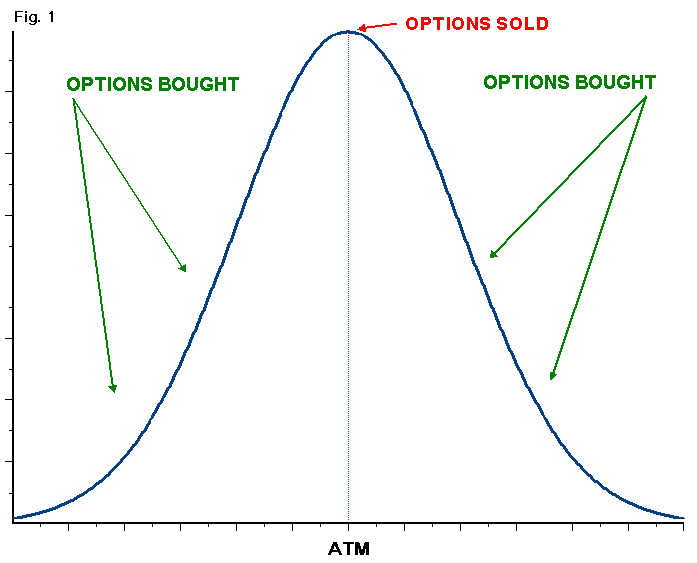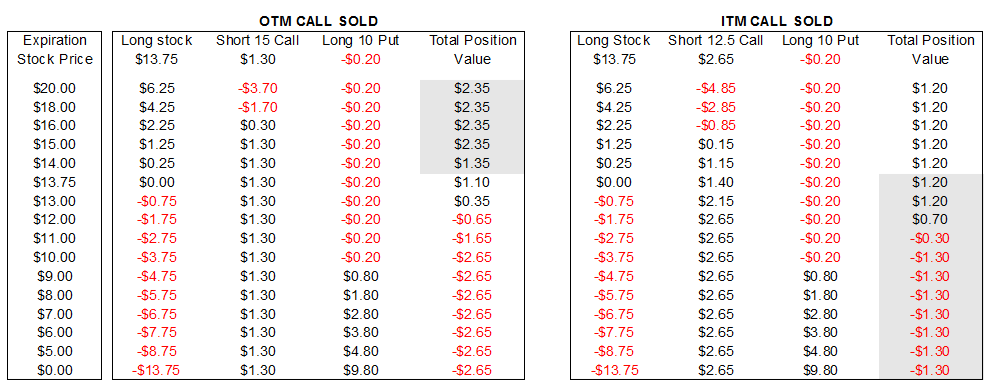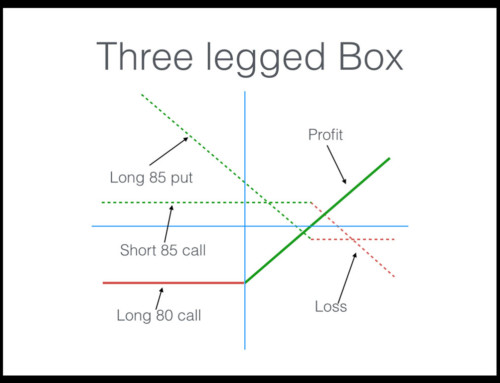The title of the program may sound overly ambitious, but it completely describes the result that we are trying to achieve. We are sincere when we claim that this strategy alone is worth the price of this course – period. All other strategies and materials are our gift to you. While it sounds like a fantasy, it is based on the sound mathematics of compounded returns. It just so happens that if one starts with $25,000 and one is fortunate enough to find a strategy that averages 10% per month for five years, that measly $25,000 will have become a cool million dollars. Of course, the trick is to find such a strategy that can average 10% a month. At Random Walk, we don’t pretend to have all the answers, but just maybe we have something that will give you the best chance. And just maybe, we have something to teach you beyond what is available elsewhere. Our sincere goal is to assist in making you the best trader possible while providing you with little tricks learned on the trading floors by professional market-makers.
The logic behind the strategy comes from, you guessed it, the normal distribution curve which is what all options are priced by. For someone to make 10% a month on a non-directional strategy, usually something has to be sold; but when you sell something you are unprotected so you will have to purchase something else for protection. When we sell something we will be selling the peak of the normal distribution curve and when we buy something we will be purchasing a tail (an out-of-the-money option). In other words, we will be selling expensive options and buying cheap options for protection.
This strategy is highly related to the Essentials text. you may want to check what’s inside the book here: Essentials Table of Contents or the brief description here.
Much like insurance companies who sell expensive premiums on a home or car and then hedge by purchasing insurance from re-insurance companies, we will do the same thing with the normal distribution curve on stocks whose options exhibit high volatility levels. We will find stocks that have high volatility, sell the options of those stocks and then buy cheap insurance (via options and stock).
HOW IT WORKS
- Pick a stock that you would not mind owning. Furthermore, make sure that you have enough funds to at least purchase the stock on margin. Where to find the stocks is in the criteria.
- Rather than outright purchasing the stock, we will sell an at-the-money put and purchase an OTM put. In other words, we will sell a put spread.
- If we are not assigned, we will allow the put spread to expire worthless. No maintenance is required to manage this step.
- If we are assigned and we have to purchase the stock, buy it on margin. While this would normally represent large downside exposure, keep in mind that we still own the out-of-the-money put. This will protect us from any catastrophic drop in the stock.
- If we are assigned at expiration and the long put is out of the money, our long put in the spread will expire worthless. In that case, if you no longer like the stock, sell it out and find a new one. If you do like it, purchase an out-of-the-money put in the next month.
- Sell a call in the same expiration month as the put that was purchased but at a higher strike than where the stock currently rests (an NTM call). This will allow us to bring in some premium and increase our potential returns.
- At expiration, if the stock rises above the short call strike, allow the stock to be called away and take your gains. If the stock drops below the put strike, allow the stock to be taken away at the lower price. If you still like the stock, sell a new put spread and start the process over.
- If the stock remains between the short call and long put strikes, either buy a new put and sell a new call or sell the stock and start the process over with a new stock.
- Repeat.
IMPORTANT
In a perfect world, the returns described below will always work, but we do not live in a perfect world. The strategy is relatively straightforward though it appears complicated the first time one reads it through. Do not give up on it, and if it helps, keep in mind that this is basically a collar strategy refined to take advantage of option premiums instead of stock appreciation. This is a strategy where we are not necessarily looking for the stock to run up as is desired with a collar, but rather one where we are looking for high option premiums. Since we will be selling ATM options, we can minimize our hedging costs by using stock shares (which do not have premiums) instead of options some of the time.
FIVE-YEAR MILLIONAIRE vs. COLLAR
Many reading this are going to see the similarities and differences between the Five-Year Millionaire and the collar and question which to use and when. The answer should follow the thought process:
Opinion = Collar
No Opinion = Five-Year Millionaire
1. Opinion
If you have an opinion that a particular stock is going up (or down with reverse collars) to an extent that it will outperform the market, then the collar is likely the better choice. The key here is to be honest with yourself. What is your track record of success? Everyone has opinions and before the trade, has a little voice in their head saying, “This is going to be the big one,” but what has history shown? If you are good at spotting large trending stocks and riding them, then the collar may be for you. Others have given up on the thought of beating the market and prefer to go off more of a pure random walk model.
2. No Opinion
It is always nice to beat the market but many statisticians have shown that the vast majority of fund managers (professionals) have a hard time even keeping up with the market, let alone beating it. If you have given up on trying to be a home run hitter, then the Five-Year Millionaire strategy is likely the better choice. I know you may not be in the sexy stocks that all your friends are raving about, but what would you rather have – money or the comfort of being a loser when your friends are losing and a winner when your friends are winning? The fact is that despite never having heard of a stock, that doesn’t make it a bad stock, especially when it is paying you (in the form of large premiums) to like it. If you have no opinions and are only in this game for money, then you may want to pick a name you don’t know and try this for a few months. Change is hard, but it is usually an evolutionary process.
THE FIVE-YEAR MILLIONAIRE CRITERIA
PICKING THE STOCK AND THE OPTIONS
1. You have to think about what you are trying to do here. If your trade works in your favor, you’d like to be able to average a gain of 10% per month. Therefore, the first step is to look at the options and decide what constitutes a possible 10% per month candidate. After all, it’s not just any set of options that will do the trick here.
Make sure that the options that you are considering have somewhere between two and five weeks remaining until expiration. In this way, you are not trading those last two weeks which tend to have very little time value and too much gamma for our purposes. In the same vein, we are not trading too far out, which has the effect of mitigating time decay to the point where a trader sees little to no benefit over the majority of the time in the trade. As you have more weeks remaining until expiration, your option prices will have to be higher in order to achieve the 10% per month returns. In fact, for each week remaining until expiration, you will have to make 2.5%. For example, if you sell an option with three weeks left until expiration, that option premium relative to the stock price must be on the order of 7.5% for that three-week period as that is the approximate equivalent of 10% over a one-month period.
Select the nearest expiration month having at least eight trading days remaining until expiration. Multiply the number of days remaining until expiration by 0.5%. This will give you the percentage return needed to average a 10% return per month. For example, if there are 25 trading days remaining until expiration, 25 x 0.5% = 12.5%. This is the percentage amount that will generate an average return of slightly more than 10% per month.
2. Once you have found the option expiration that you would like to trade, find out how much time value exists in the option that you want to sell. For a put option that is ITM, we first need to remove the real value. This is done by simply subtracting the stock price from the strike price. The remaining amount is the time value of the put option. For an at-the-money or OTM put, the put value is the time value.
3. Decide what option premium will dictate the necessary 10% return per month. In order to do so, we take the time value in the option nearest to the money and we divide it by the stock price. That will equal our percentage return on the trade. For example, suppose we have a stock trading for $19 per share and the 20 put with four weeks to go is worth $3.50.
Then the time value of the 20 put with the stock at $19 = $2.50. We then divide $2.50 by the stock price and we get $2.50 / $19.00 = 13.2%.
Some of you may be asking, “What is the likelihood that we find a stock that will give us a consistent 10% or more per month gain?” There happen to be quite a few stocks out there that fit our criteria. You can also use any stock you choose provided you go through the math and the numbers work out in a way with which you are comfortable. The search engine mentioned does not always pick up the best candidate out there, nor does it omit ones that are unfavorable. However, it is a great source to utilize if you are unfamiliar with any volatile stocks and/or if you want to choose names you don’t know to avoid having a bias or opinion.
4. When it’s all said and done, you will still want to have a bullish to neutral bias on the stock, so make sure that you see enough bullish or neutral news reports in order to make sure you feel comfortable being bullish or neutral on the stock you choose. If you cannot bring yourself to be bullish (or at least neutral) on the stock, then find another candidate.
ONCE YOU’VE FOUND A STOCK
1. Once you have acknowledged that you are neutral/bullish on a stock and would like to buy it, decide how many shares you would like to own. Make sure that at the very least you can afford ownership of the stock on margin. However, rather than outright purchasing the stock, we will sell a near month put spread. The criteria for the put spread is such that we will sell the put that is nearest to the money. Then, we will purchase the put that is one strike below the one that we sold.
The reason for selling the at-the-money put is that it contains the highest level of time value while the out-of-the-money put will be cheaper. When selling the ATM and buying an OTM put via the sale of a put spread, we will be taking in premium.
Also keep in mind that because we are working with very volatile stocks and options, it is not
uncommon to be able to sell a put spread with only a week until expiration that by itself can generate about 10% of the value of the underlying (e.g. receive $1.00 from the sale of the put spread with a stock that is trading for $10). This will enhance the returns from the start.
There are three main ways that we could begin to accumulate a stock. The first way is to purchase the stock outright. The second way is to sell a naked put, collect some premium along the way, and hope to get assigned. The third way is to sell a put spread and take in slightly less premium than we what we would receive selling a naked option. The benefit of this third alternative is that we smartly limit our downside exposure.
For example, suppose a stock was trading for $19 per share. If we could sell the 20 put at $3.50 and purchase the 15 put for $0.25, then we could take in $3.50 – $0.25 = $3.25. On a $5-wide put spread where we received a credit of $3.25, if the stock dropped, even if it dropped all the way to zero, our total maximum loss would have been $5.00 – $3.25 = $1.75 or $175 per spread.
2. Allow the position to run its course until the final week of expiration. The worst that can happen is that you become the owner of a stock that you wanted to own in the first place. Even if you no longer like the stock by expiration, your maximum risk on the position is minuscule compared to what it would have been if you had just outright bought the stock. On the final few days of expiration week, however, you have a few choices:
2a. If the stock settles above your short put strike, you can allow the spread to expire worthless and keep the premium. How bad would this be? You collect premium and then do the same thing again in the next month. You sell another put spread and take in more money.
If your stock is sufficiently above your short strike, you may want to consider re-purchasing the short put for $0.10 or less. That will give you peace of mind and will close out your risk in the position while still leaving you the long put in the off chance that the stock suffers a catastrophic drop at the last moment.
2b. If the stock looks like it will settle between your long and your short put strikes and you still think you want to own the stock, then let your short put be assigned and take delivery of the stock on the Monday following expiration. Keep in mind that the long put that you bought will have expired on Friday. Therefore, in order to remain protected, you will have to purchase a put option in the next month. For example, if the June options are expiring, then you will want to hedge by purchasing a July put option. ON EXPIRATION DAY you will want to buy the next month’s put (July in this example) that is out-of-the-money and sell an at-the-money call (in July as well). Should the stock be between two strikes, you will want to select the call that has the most time premium. Keep in mind the difference between time value and option premium. An option which is trading for $2.00 but has $1.00 of intrinsic value only has $1.00 of time value. Suppose a stock is trading for $13.73 which is between the 12.50 and 15 strikes. Which does one choose to sell? See (D.) for the answer.
As you will now be a stockholder, you will have to come up with the necessary capital requirements for purchasing the stock. Make sure that your broker will allow you to purchase the stock on margin in order to retain as much purchasing power as possible. If you are trading under the “old” margin rules, then you will have to come up with 50% of the stock price plus the cost of the protective put. If you are trading under the new margin rules, you will merely have to come up with an amount to match the maximum risk inherent in your position. We will expand on what it means to trade under the new margin rules later in the chapter.
2c. If the stock looks like it will settle between your long and your short put strikes but you no longer wish to own the stock, simply buy back the put spread. Keep in mind that depending on the premiums of the individual options, you may have to pay more for the put spread than the price for which you sold it. However, buying the spread back is worth the additional peace of mind achieved when you know that you will no longer have to purchase a stock you no longer want.
2d. If it appears that the stock will settle below your long put strike, then you will be assigned long stock on the higher strike put that you were short but you will exercise your long put and hence you will sell the stock at the lower strike. This will mean that you will have achieved maximum loss on the position and while it is not what you were hoping for, it is better than just about any outcome you could have hoped for with unprotected long stock or with a plain naked put position.
If for some strange reason you choose not to exercise your long put, then you will be the proud owner of long unprotected stock. Given that the stock has already moved significantly lower since you were initially bullish on it, trying to trade the stock with no protection is not recommended.
IN THE CASE OF EARLY OR EARLIER THAN EXPECTED ASSIGNMENT
While the rule is that you want to wait until expiration week to evaluate the position, if you are trading equities, there is a chance that you may run into an early assignment(s). If this happens, then you have a long stock position to manage possibly with significant time remaining until expiration. In those cases, we will take the following approach:
In the above-stated case, as long as you are within the front month expiration cycle, things look pretty good. First, you have purchased stock after having received a premium from the short put position. Second, you still have protection since you own the lower strike put. Very little management is required in the first month. Your losses on the position are strictly limited to the difference between the strikes minus the premium collected by the original put spread sale.
If the stock remains between the strikes until expiration, be mindful that your long put protection will expire; so in order to keep the stock in its protected state, you will want to purchase one protective put in the next month for every 100 shares you own no later than the Monday following expiration.
If you decide that upon assignment you no longer want to keep the stock, then you can do one of two things. If you have no time value left in your long put position, you can exercise your long put option and have the stock taken away. If you do have time value left in your long put position but would still prefer to rid yourself of the stock, sell the put and sell the stock.
If instead, you have established that you are going to keep the stock while protecting it with a put, the next step is to find a way to at least partially finance the cost of the put. That brings us to the third step.
3. Once you have successfully taken your long stock position into the next month, for every 100 shares of stock you are long, sell a call option that is nearest to the money in the same expiration month as your long put. Since you have purchased an OTM put and you have sold a near-the-money call, the net result will be a credit to your position. Given that the call that is nearest to the money has the most time value, this represents the highest amount of premium we could hope to collect per month from the position.
Suppose a stock is trading for $13.75 which is between the 12.50 and 15 strikes. Which call option does one choose to sell? We can use the following hypothetical option chain to illustrate your choices:
You will notice that the ITM option (12.50 strike) has slightly more time value than the 15 strike option. You will then have to make a decision between these two options as both have their advantages and disadvantages.
3a. 12.50 Strike Call
By selling the 12.50 strike call you will take in $0.10 more time value than you would by selling the 15 strike call. In addition, because the 12.50 call is ITM already you will not be able to make money on any appreciation the stock makes. Should the stock advance, any appreciation in the value of the stock will be offset by the call you sold gaining intrinsic value. The profit on the stock will be offset by a loss on the call. Any appreciation will be from the decay of time value of the option.
Disadvantage: You cannot make money on an advance in the stock.
Advantage: By selling a call that has intrinsic value in it ($1.25 in this example) it is added protection against a downturn in the stock.
3b. 15 Strike Call
By selling the 15 strike call when the stock is at $13.75 (in this example) you are giving the stock room to appreciate before the short call gains intrinsic value. In this example not only do we collect $1.30 from the sale of the call, but the stock can make $1.25 (15 strike call – $13.75 stock price) above that.
Disadvantage: By not having a call which already contains some intrinsic value, you will only be getting protection against a stock decline with the put and with the call time value. No intrinsic value is in the call option to further buffer against a stock decline.
Advantage: By selling an OTM call you can also make money on the advance of the stock should you have reason to believe the stock is in a bullish trend.
*Note: All things being equal, and without an opinion on the stock’s next directional move, choosing the ITM option (12.50 in this example) is often the safe and optimal choice.
Looking at the table below will give you a quick visual understanding of how the two positions (3.A and 3.B) compare through a range of possible stock prices. To do this we will have to assign a put to the position to give this theoretical position a more realistic understanding as the put would obviously be incorporated in all strategies where stock is owned. For purposes of this example we will purchase the 10-strike put for $0.20.
The table illustrated on the following page shows how the OTM and ITM calls sold compare. As expected, when selling an ITM call, the returns/losses are better when the stock is flat to down. Should the stock advance, the OTM call shows a higher return but this comes at the expense of more risk. The shaded areas represent where the best choice would have been for a specific stock price. Notice that should the stock remain at $13.75 (the current price) the return is $0.10 better for the ITM call sold because it contained $0.10 more time value when the trade was placed.
4. Wait until expiration. Once your position is in place, you now have what we know as a collar. The twist here is that we are short the near-the-money call option and long the out-of-the-money put option. At this point, all we do is wait until expiration. Again, the only difference from this point going forward is that this strategy is taking advantage of time premium whereas a traditional collar is designed to make money on stock appreciation while protecting your stock. We’re in a good position.
5. Prior to expiration:
Scenario A: Options prematurely erode
Keep in mind that expiration week is a time when time value is wasted away at the fastest rate. You can check the week prior to and the week of expiration to see what the options are doing. If the time value has eroded away to where the call option has little or no time value left, the only way to make money then is by stock appreciation. In this scenario, you will want to possibly close out the options for the current month and sell a new call and buy a new put in order to take in additional capital for potential income.
Scenario B: Volatility collapses prematurely
This could also occur prior to expiration, had news been pending or had the market sold off to where volatility was on extreme high levels and now that the uncertainty/fear is over, a volatility collapse has eroded the options.
Scenario C: Stock falls
Lastly, it is very possible that should the stock sell off, your call would now be for all practical purposes worthless and not providing benefit. As a matter of fact, should the call not be providing benefit, it is providing risk. You have something that is not generating revenue but could inhibit profit gains should the stock shoot up. You may be able to buy the call back and sell another call at the previous strike (one month further out) or ATM. If doing this, you may elect to hold onto the current put which may be ITM and keep it for protection until expiration and only roll out to the next month on expiration.
*Note: If you roll the calls down a strike, pay careful attention to not having the call and put at the same strike as this will no longer provide opportunity. A position where the call and put are at the same strike is a conversion. See Chapter 1: Vertical Spreads for more on synthetics.
6. On expiration day, one of three things will happen:
- The stock closes above the call strike (e.g., higher than $12.50 or $15).
- The stock closes below the put strike (e.g., lower than $10).
- The stock closes between the call and put strike (e.g., between $10 and $12.50 or between $10 and $15).
6a. The stock closes above the call strike. Position cancels out, stock is called away and we start over the next month.
Should the stock close above the call strike and you choose not to roll out to the next month by purchasing back the short call and putting on a new collar, the entire position will close out. In the example we have been using, suppose we are short the 15-strike call and the stock closes at $16.
The owner of the 15-strike call will exercise his right to buy the stock which forces us to give him our long stock (we were assigned). This closes out the long call and stock position. Since the 10-strike put is far OTM, it will expire worthless. Our entire position is now gone and all that is left is hopefully a profit. We now start over again the following month.
6b. The stock closes below the put strike. Position cancels out and we start over the next month.
Should the stock close below the put strike and you choose not to roll out to the next month by selling out the long put and putting on a new collar, the entire position will close out. Being long the put (the 10-strike put in this example) gives you the right to sell the stock at the strike. Since the stock is now trading below the strike, you will either exercise your put or it will be done automatically if the option is ITM. Your long stock is sold and the put disappears. Since the call is far out-of-the-money it will expire worthless and the whole position will be gone. You will start over again next month.
6c. The stock closes between the call and put strike (e.g., between $10 and $12.50, or between $10 and $15). If you want to hold on to the stock, put on a new collar.
Depending on where in the middle the stock closes, this can be the best of all worlds and the start of a mini-annuity. If the call and put both expire worthless, nothing happens to the stock.
i. The day of expiration will entail us buying back the short call for $0.05 so that we can sell a new call in the next month (recall that most brokers will not allow you to be short two calls per 100 shares of stock unless you can afford the additional margin of 50% of the stock).
ii. We will then sell another call and buy a new put in the following month (July in the example above).
iii. Only do this if you have calculated the option premiums and how they net out, then only if the numbers still make sense. Some stocks will only work for a month or two and others are good for years. I have been watching a stock called NFLD which has made sense on-again and off-again for over seven years (this is NOT a recommendation and NFLD may not meet the criteria by the time you read this text – it is ONLY mentioned as an example to go back and review).
Should the stock in our example above close at $13.75 where it started, we will go into July now and purchase the 10 put for $0.20 and sell the $15 call again for $1.30. This will net us another $1.10 for the second month in a row. Keep in mind that the stock you purchased may or may not have been done on margin. If the stock was purchased on margin and you took in $1.10 (provided the stock didn’t make or lose money), you would net the following per month:
REVIEW: If you still own the stock, here’s what you do:
You keep the stock, re-hedge by purchasing an out-of-the-money put and by selling a near-the-money call. The options transactions will result in another net credit.
OR
You sell the stock and repeat the strategy with a different candidate.
Keep in mind that expiration week is a time when time value is wasted away at the greatest rate. You can check the week prior and the week of expiration to see what the options are doing. If the time value has eroded away to where the call option has little or no time value left, the only way to make money is by stock appreciation. In this scenario you will want to possibly close out the options for the current month and sell a new call and buy a new put in order to take in additional capital for potential income.
This also could occur prior to expiration had news been pending or the market sold off to where volatility was on extreme levels on the high side and now that the uncertainty/fear was over, the ensuing volatility collapse had eroded the options.
*Note: As far as margin is concerned, things have changed since April 2, 2007.
7. (Optional) If the short call option drops substantially in value either due to time decay, a drop in the stock, a drop in implied volatility or a combination of the aforementioned variables, consider repurchasing the short call. That way, if the stock does rebound, you can sell the call out again and possibly double the amount of premium that you collect in a given month.
8.(Optional) If the stock is in an extremely bullish market and you want to add some upside potential above what you already have predetermined before entering into the trade, you can sell a call spread instead of just selling a call when hedging the stock. You will obviously be receiving less money than if you sold the naked call, but should the stock shoot up dramatically you are also leaving room for upside potential. This sale of a call spread is usually not done in conjunction with the five-year millionaire strategy and is reserved for all but the most volatile of situations. Keep in mind that by selling the vertical spread (instead of the naked option) you are giving up premiums for an upside potential that does not have a very good statistical chance of occurring when viewed in the big picture.A situation that may be a consideration for a call spread sale (as opposed to the sale of the naked call) is when there is some pending news event or announcement that could result in a huge advance in the price of the stock. FDA news about approval of a new drug, the settlement of a class action case, takeover rumors and the like are some of the conditions for selecting this deviation from the normal strategy’s criteria.
- Stay disciplined and avoid greed. If something changes that lowers the return or potentially increases the risk of your trade, it may be better to back off or close the trade than to push things. It is often easier to lose money than make money, and greed is usually the culprit behind losses.
After Seven Months into the Pandemic
Gold continuously moves higher in the past months and [...]
Wirex joins MasterCard Crypto Program
Cryptocurrency is here to stay. The banks know about [...]

















